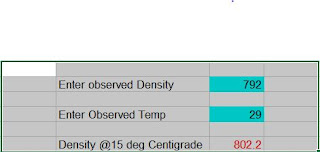Jet A-1 Quality on board of Accident flight British airways BA -038 - part 7
Jet A-1 Quality on board of Accident flight British airways BA -038 - part 7
This is in continuation of “British Airways flight BA-038accident and aviation fuel quantity aspects - part 6”, a blog series for understanding Aviation turbine fuel’s role in modern civil flights specially behaviour of water in fuel to mitigate it’s adverse effects during flight, including at high altitude where water will turn into ice. Last part gave a brief idea on fuel system, storage tanks, pumps, fuel feed manifold, fuel tank vents, fuel filters, fuel oil heater, fuel flow meter etcFuel Origin and Quality on board of BA-038.
Aviation Fuel refuelled was Jet A-1 originated from South Korea and was shipped to Tianjin, China and transferred to the airport bulk fuel storage facility at Beijing. Fuel was certified to meet Chinese specification GB6537, issued by China’s National Technology Supervisory Bureau. The GB6537 standard covers “No.3 Jet Fuel” which is basically equivalent to Jet A1 and is the predominant kerosene type aviation fuel used in China.
The investigation was provided with a number of documents including the refinery test certificates, airport storage tank records, hydrant records and refuelling vehicle records. Quality assurance checks undertaken at various points on its journey to the aircraft showed no evidence of significant contamination of the fuel. Moreover, the properties of the fuel recorded in the refuelling receipt and quality assurance certificates were consistent with the test results for the fuel samples taken from the accident flight BA-038 after the accident.
Freezing Point of Jet A-1
Post Accident, the freezing point of the fuel sampled from BA-038 was measured using both an automatic and a manual test. Neither test could detect any wax crystals in the fuel at temperatures warmer than -57°C.
Estimated water content of fuel on BA-038
Based on the temperature of the fuel, it was estimated that the fuel loaded at Beijing would have contained up to 3 litre (40 ppm) of dissolved water and a maximum of 2 litre (30 ppm) of undissolved water (entrained or free). In addition, it was estimated that a maximum of 0.14 litre of water could have been drawn in through the fuel tank vent system during the flight to Heathrow. This water would have been evenly spread throughout the fuel and would have been in addition to any water remaining in the fuel system from previous flights. These quantities of water are considered normal for aviation turbine fuel.
After accident fuel samples testing:
Extensive testing of the fuel samples could identify nothing unusual about the fuel, which complied fully with the specifications for Jet A-1. Moreover, there was no evidence of contamination and no components were detected that would not normally be found in aviation turbine fuel.
FSII was not detected in any of the samples tested.
In next article we will see interesting aspects of Aviation fuel relating BA-038 Accident.
Author's Profile
List of all blog articles on Petroleum QC by RJ Patel.
References:
-Report on the accident to Boeing 777-236ER, G-YMMM, at London Heathrow Airport on 17 January 2008
-exxonmobile aviationspecification-2008
Earlier parts of this series:
British Airways flight BA-038 accident and aviation fuel quantity aspects - part 6
British Airways flight BA 38 accident and Aircraft Jet A-1 fuel System - part 5
British Airways flight BA 38 accident and Jet A-1 fuel temperature - part 4
British Airways flight BA 038 flight altitude and Cold fuel Management - part 3”
British Airways flight BA-038 accident and aviation fuel quantity aspects - part 6
British Airways flight BA 38 accident and Aircraft Jet A-1 fuel System - part 5
British Airways flight BA 38 accident and Jet A-1 fuel temperature - part 4
British Airways flight BA 038 flight altitude and Cold fuel Management - part 3”


Comments